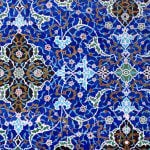
At least once, and perhaps twice, I used Daniel W. Brown, A New Introduction to Islam, 2d. ed. (Malden MA and Oxford: Wiley-Blackwell, 2009) as the principal text for my introductory course on the religion of Islam. Along the way, I marked a few passages that reminded me of points that I myself wanted to make in a revised third edition of my book on Islam for Latter-day Saints (on which I’m finally beginning to really get to work). Here are two of those passages:
At the height of Ottoman power under Sulayman “the Lawgiver” (also known as “the Magnificent”), who reigned for forty-six years from 1520 to 1566, the empire encircled the Black and Red Seas, and encompassed three-quarters of the Mediterranean coast. The Ottomans ruled over vast numbers of non-Muslim subjects, and the Turkish armies were the terror of Europe. In 1529 Sulayman’s forces laid siege to Vienna, and would certainly have taken it had their troops not been so eager to get home before winter.
While the Ottomans were expanding into Europe, a rival Muslim empire was growing in Persia. In 1501 the leader of a radical Shi‘i sufi order conquered Tabriz, set himself up as ruler, and pronounced Twelver Shi‘ism the creed of the state. Isma‘il thus became the founder of the Safavid empire and the most successful and intolerant Shi‘i ruler since the fall of the Fatimids. Isma‘il seems to have aimed at no less than the complete destruction of Sunni Islam, and in the territory that came fully under his control he was astonishingly successful. He enforced the ritual cursing of the first three caliphs, Abu Bakr, ‘Umar, and ‘Uthman, as usurpers, disbanded Sunni tariqas and seized their assets, faced Sunni ‘ulama’ with the choice of conversion, death, or exile, and imported Shi‘i scholars to replace them. The almost complete predominance of Twelver Shi‘ism in modern Iran and southern Iraq is largely Shah Isma‘il’s doing. (235-236)
The result was, for the first time, a sharp divide between Shi‘i and Sunni Islam along geographical lines. The split deeply affected the ‘ulama’, who were ghettoized. Consequently, Shi‘i and Sunni intellectual culture moved in different directions. The division also had a profound effect on the development of popular piety. In Safavid lands the dominant religious form of sunni Islam, tariqa sufism, was replaced with popular Shi‘i piety, centered on the remembrance of the passion of Husayn at Karbala’ and encouraging hatred of Sunnis. Under the Safavids the celebration of the passion of Husayn during the month of Muharram came to be manifested in large-scale public rituals, including funeral processions, self-flagellation, and passion plays. (237)












